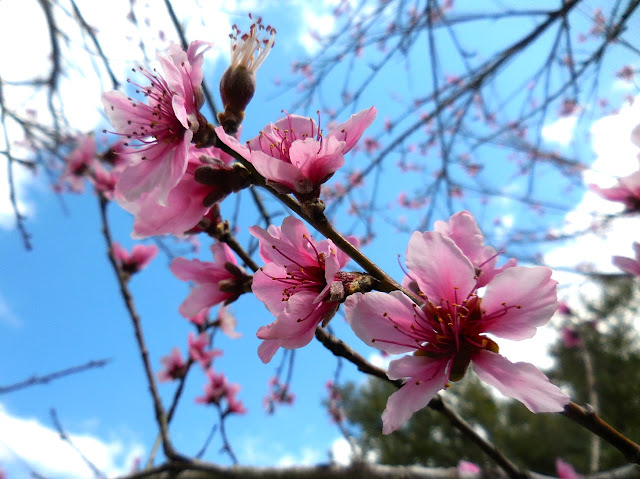 |
| A bluebonnet seedling from November 2015. This spring, we have DOZENS of them in the Meadow! |
"Hey, guys, wait a minute!"
A week or so before, I'd seen a couple of young boys on bikes wheel across the Meadow. That's not good, I thought to myself. I sure didn't want them to get in that habit.
But I also understood completely. What normal kid can resist an open field, just waiting to be cut across for fun? Growing up, hadn't I ridden my own bike on a beat-down "race track" on a vacant lot across from my home? My friends and I spent hours there, zipping around the curves.
"Where'd they go?" James asked, after I'd reported the incident to him. He wanted to set those boys straight right away.
"Oh, they're long gone. Don't worry," I assured him. "I'll talk to them."
I had my chance Sunday afternoon, when I happened to be in the front yard, pulling henbit and chickweed. Two boys rode by on their bikes. I waited. Sure enough, one pulled off the street and cut across the Meadow.
"You want us to come over there?" yelled the boy, who'd stayed on the street. I knew him. He's a fourth grader who lives in our neighborhood.
"No, it's okay! I'm coming!" I hollered back as I walked toward them. Patiently, they straddled their bikes and waited for me.
"So," I began, smiling, "I just wanted to ask you not to ride across this area, and here's why." I went on explain how we're growing bluebonnets and other wildflowers on this land, that in a month or so they'll be blooming, and the Meadow will be beautiful. That other species grow there, too, like milkweeds for the monarchs.
The boys listened.
"I'm not fussing at you," I continued. "You're doing what you're suppose to do–be a kid and have fun outside! But I just wanted to explain so you'll understand why I'm asking you not to ride across this land. And hey," I added, sticking out my hand to the older boy who'd cut across the Meadow, "I'm Sheryl. Who are you?"
He told me his name, and we shook hands. He also apologized five or six times. What a nice young man!
"Oh, no, it's okay!" I exclaimed. "Really! You don't have to apologize. Now you know. And maybe you can explain to your friends, too?" They both nodded.
And by the way, since he was a sixth grader, did he know Ms. Meier at the middle school? Yes, the older boy said. Well, she brings her ecology class to our yard so maybe he'd come next year if he took the class, I said. He nodded.
"I'm sorry," he said a final time.
"We're good," I said. "Don't worry! Thank y'all!" We said our good byes, and the boys took off. Everyone was smiling.
You know, I could have fussed at those boys and ordered them to never, ever again trespass on our land. But what good would that have done? That's not me anyway. Instead, I wanted to share the beauty and wonder of nature, the excitement I feel in watching life unfold and change within the confounds of a tiny city lot. That's what I wanted to accomplish by talking with them.
I hope they took a little bit of my enthusiasm with them.
Now if only I could educate our neighborhood deer. Yesterday, I counted at least three trails that crisscross the Meadow.
*SIGH*








































